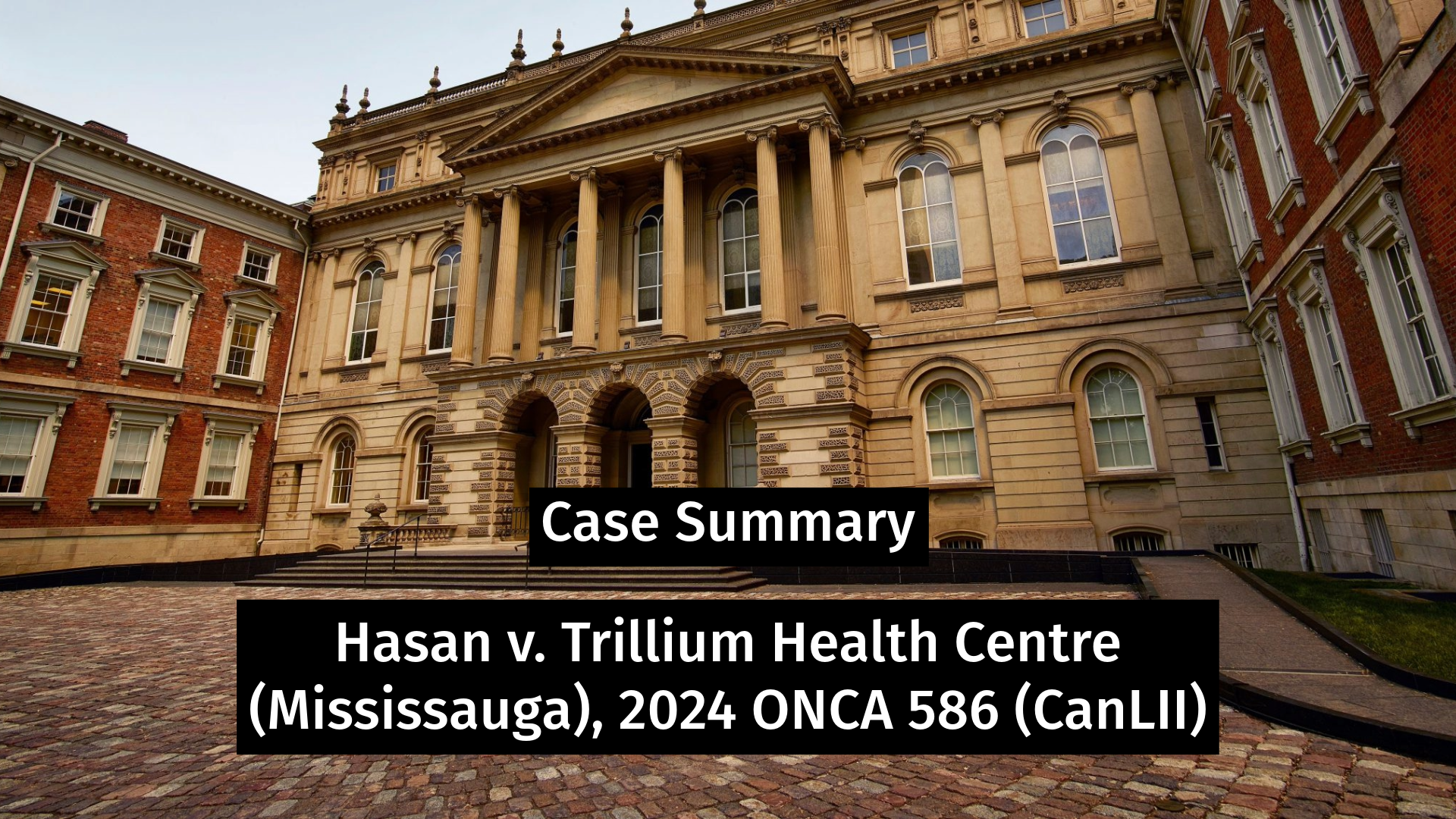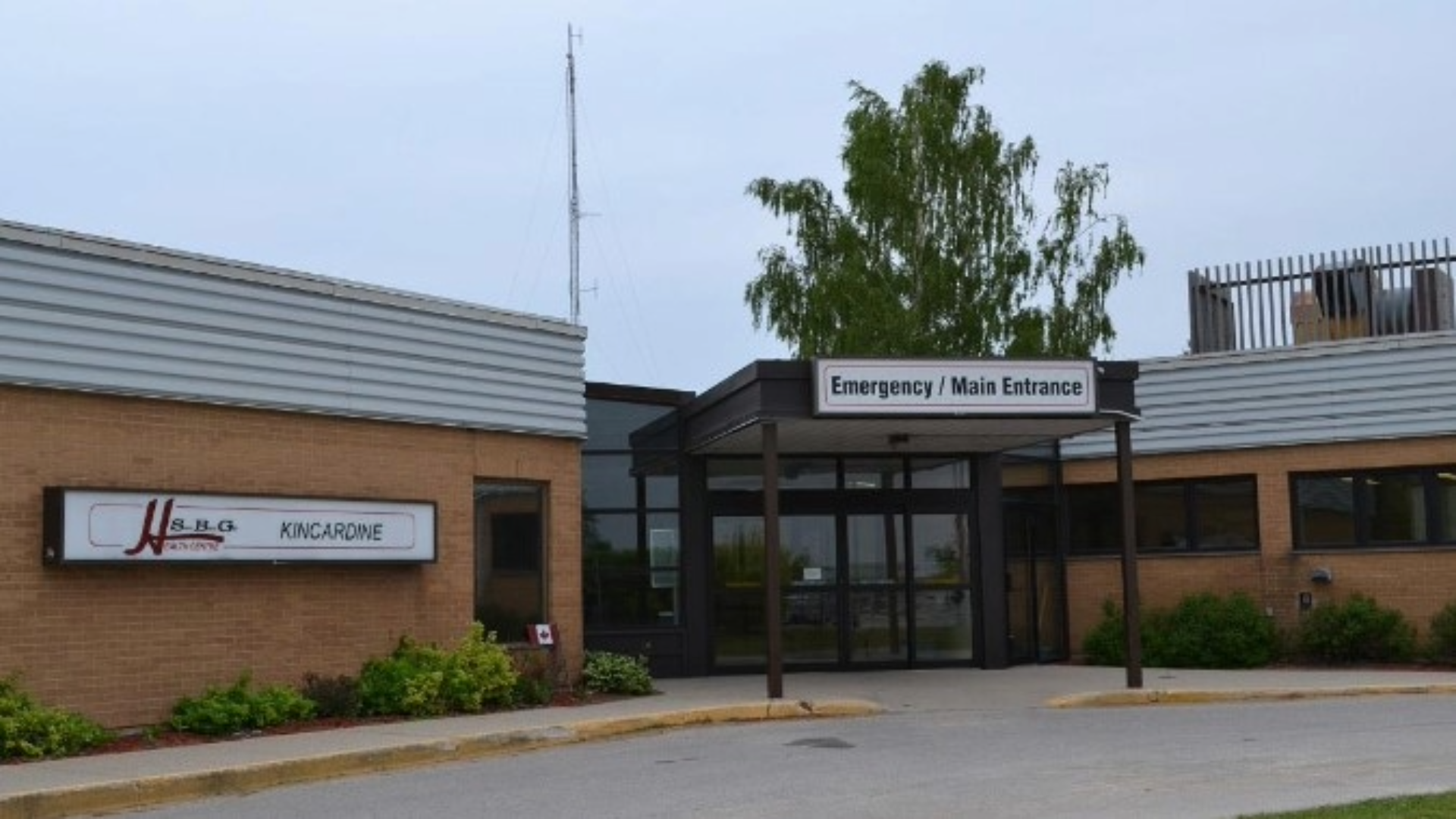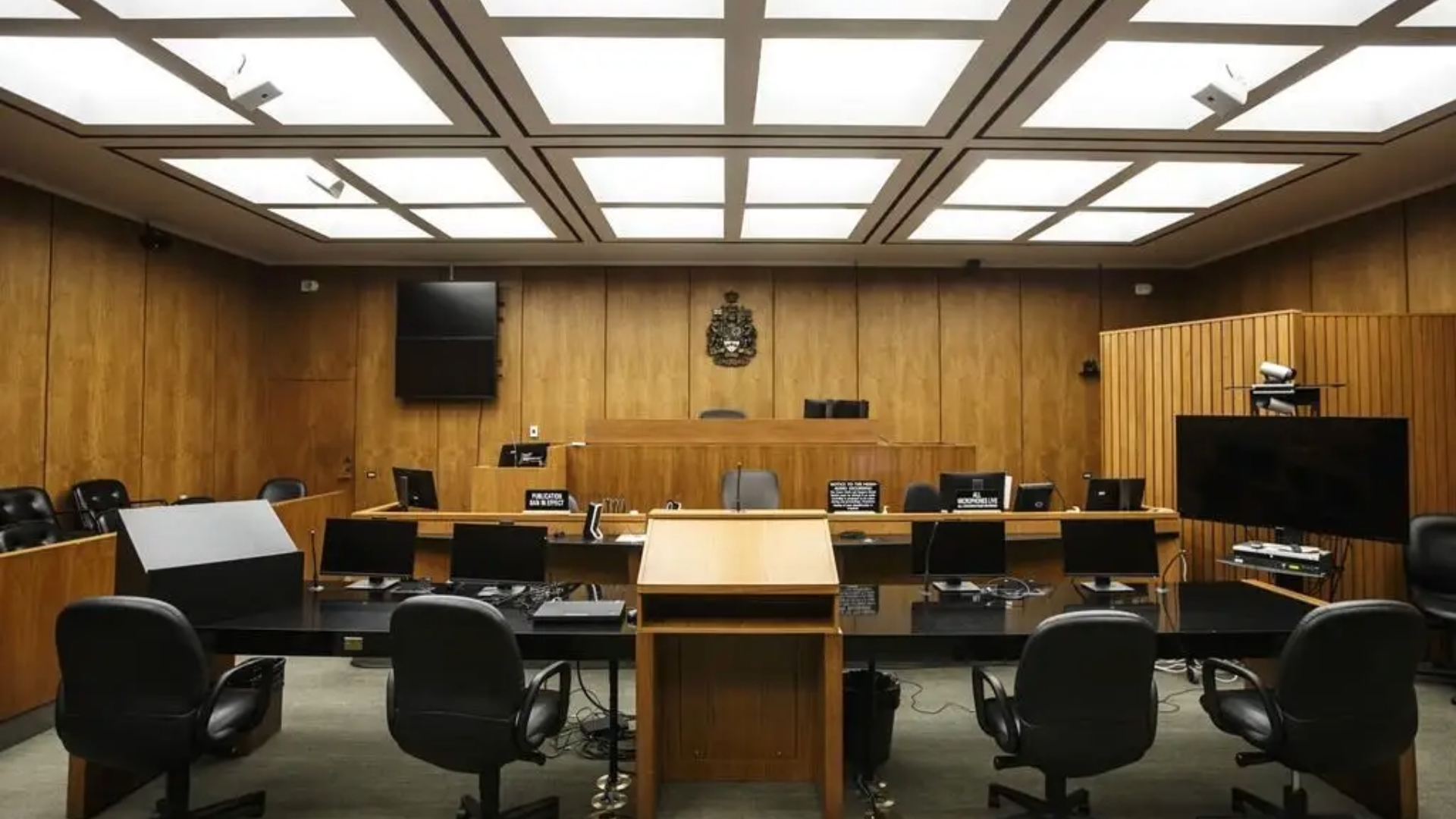
Ishac v Ontario (Health Insurance Plan) – Pectoral Implant Removal Not Covered by OHIP
In Ontario, the line between an insured health service and an elective cosmetic procedure can sometimes seem blurry. The Ontario Health Insurance Plan (OHIP) is

On July 25, 2024, the Court of Appeal for Ontario dismissed the appeal of an emergency room physician whose negligence in failing to consider a stroke in his differential diagnosis led to delayed treatment and a bad outcome for the patient.
The physician’s appeal was limited to argument that the patient had failed to prove what specific treatments would have been initiated and what their corresponding effect would have been on the patient’s outcome.
The patient was 40 years old at the time.
On December 3, 2011, he attended at the emergency department at Milton District Hospital complaining of dizziness, nausea and vomiting. The doctor diagnosed him with “probable peripheral vertigo”, prescribed some medication and discharged him. The patient continued to feel unwell. Later that morning, he went to his family physician who advised him to go directly to the emergency department at Trillium and wrote a referral note requesting that the hospital “rule out organic cause (brain lesion or stroke)”.
The position of the physician appellant was that the patient had failed to prove causation at trial because they he failed to lead evidence as to what actually would have happened if the physician had not breached the standard care. Moreover, it was argued that a finding that “some form of treatment” would have been initiated had the standard of care had been met was insufficient to prove causation.
The appellant physician argued that the patient had to prove what specific treatment would have been offered to the patient and then prove whether that treatment would have been successful. Because there was no evidence on what specific treatments would have been initiated for the patient, the physician appellant argued the causation analysis could not go on to determine whether such treatments would have improved the patient’s outcome or not.
The Court of Appeal noted that the trial judge recognized the use of the “but for” test in determining causation and followed the relevant steps in the test set out in Sacks v. Ross, at para. 47:
The Court of Appeal further observed that the trial judge recognized that in delayed medical diagnosis and treatment cases, it is not enough for the plaintiff to show that adequate diagnosis and treatment would have given the plaintiff a chance of avoiding an unfavourable outcome. Instead, the plaintiff must show that avoiding the unfavourable outcome was “more likely than not.”
The trial judge found that the patient suffered an embolic stroke that originated with a dissecting aneurysm in the left vertebral artery at the C5/C6 level. The trial judge rejected the defence theory that the cause of the stroke was caused by a perforator ischemia caused by a dissection.
The basis for the trial judge’s finding of embolic stroke in terms of what likely happened to the patient was found by the Court of Appeal to be deeply rooted in the evidence and well laid out by the trial judge’s careful reasons. There were no palpable and overriding errors made by the trial judge.
Furthermore, the trial judge observed that appellant physician’s breach of the standard of care resulted in an evidentiary gap, namely, that there was no imaging, apart from the CT scan, that showed the progression of the stroke over time. The trial judge correctly found that the physician could not rely on the evidentiary gap resulting from the negligent lack of imaging to support his defence: Ghiassi v. Singh, 2018 ONCA 764, at para. 29; Goodwin v. Olupona, 2013 ONCA 259, 305 O.A.C. 245, at paras. 72-74. The trial judge noted that the court can infer causation where the defendant’s negligence prevents the plaintiff from demonstrating the link between the injury and its causation. The onus then shifts to the defendant to rebut that inference and any uncertainty is resolved in favour of the plaintiff.
With respect to this second step, the trial judge found that but for the physician’s negligence, the patient would have been assessed by a neurologist, would have received a timely CT angiogram, and would have received appropriate treatment.
Timely imaging would have allowed the patient to receive treatment without delay. According to the patient’s expert, Dr. David Gladstone, aspirin and heparin could have been used as a first line of treatment but that the most effective treatment was “recanalization”, that is, opening up the blockage. There were three different ways recanalization could have been performed: two involved administering a clot-dissolving drug, tPA, and the third required using a catheter to pull out the clot, i.e., endovascular treatments. These treatments were all available at Trillium at the time.
The trial judge rejected the appellant physician’s argument that Dr. Gladstone had not provided a comprehensive opinion on precisely how each of these treatment options might have worked out. The trial judge found that Dr. Gladstone had laid out how a neurologist would determine the appropriate treatment method on the spot depending on the imaging. Dr. Gladstone explained that each case was different and that it would be “exceptionally difficult…to foresee all the various treatment options and their associated intricacies, in advance of the actual procedure”, at para. 275.
The trial judge found that requiring Dr. Gladstone to go further and particularize what the imaging would have shown on the spot and how a treating doctor would have responded would be to invite speculation; in any event, the evidentiary gap brought about by the lack of timely imaging – the result of the physician’s negligence – made this sort of analysis impossible. The trial judge was satisfied that a treating doctor would have been able to treat the patient successfully: “the most significant takeaway from the evidence is that various treatment options were available for the treating physicians to consider and deploy”: para. 276.
Moreover, the trial judge had found that if the patient had been properly treated by one of the three available treatment options, he would have had a successful recanalization and therefore a good outcome: para. 279. This finding was based on three key considerations: the patient’s imaging and clinical presentation, his unique anatomical considerations, and the medical literature on recanalization: para. 281.
In dismissing the physician’s appeal, the panel observed that the trial judge’s findings were all factual in nature and reflect faithfully the Supreme Court’s direction to trial judges to take a robust and pragmatic approach to determining whether the defendant’s negligence caused the plaintiff’s loss without requiring scientific proof of causation.
Decision Date: July 25, 2024
Jurisdiction: Court of Appeal for Ontario
Citation: Hasan v. Trillium Health Centre (Mississauga), 2024 ONCA 586 (CanLII)

In Ontario, the line between an insured health service and an elective cosmetic procedure can sometimes seem blurry. The Ontario Health Insurance Plan (OHIP) is

On February 11, 2019, Bradley McKee stabbed his father, William McKee, to death. At the time of the stabbing, Bradley was 27 years old; he

On August 22, 2025, a judge of the Ontario Superior Court of Justice found emergency medicine physician Dr. Angela Cavanagh negligent for not referring a

On August 14, 2025, the Court of King’s Bench of Alberta found Dr. Mark Guhle liable for over $16,500,000 for medical malpractice leading to the